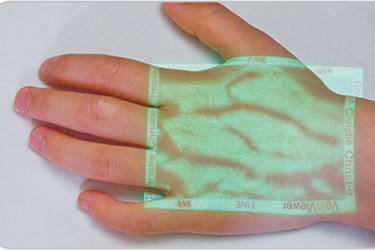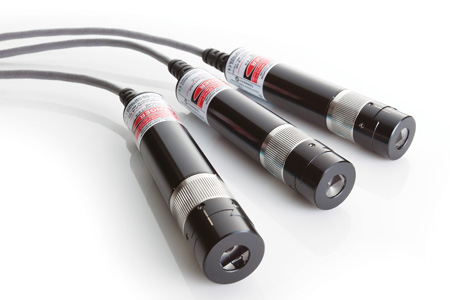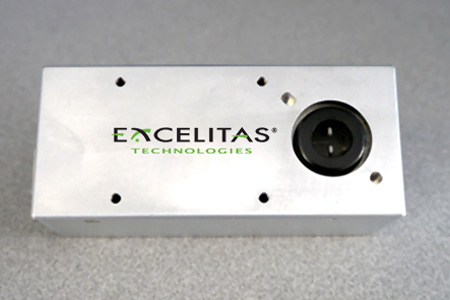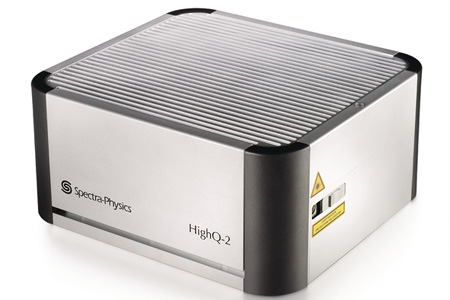Photonics And The Future Of Medicine

Photonics West serves as the perennial indicator of market trends for the photonics and optics industries. At this year’s event, held last month in San Francisco, one of the pervasive themes I observed at both the technical conference and the exhibition was the increasing role photonics and optics are playing in the development of advanced biomedical technologies. That trend is poised to continue well into the future.
I touched on this topic in my article Executive Perspectives On The World Of Optics And Photonics, which recapped a special panel session held during Photonics West 2014. The majority of the C-level panelists — representing some of the most prominent technology providers in the industry — agreed that the medical and life science markets were key to their companies’ success in 2013 and would continue to be a major area of emphasis moving into 2014.
From The Exhibition Floor
The strong connection between optics and photonics and the biomedical sector was a theme repeated at many of the booths I visited on the Photonics West exhibit floor. What follows is a sampling of noteworthy new components and systems from the show that are representative of the cutting-edge solutions available to OEMs in the medical and life science industries.
Lasers For Point-Of-Care Devices, Optogenetics
Part of the appeal of photonics technology in the biomedical industry is its ability to miniaturize designs, and Coherent’s BioRay lasers — only 95 mm long and weighing in at less than 70 g — are perfectly aligned with that concept. While they were designed for integration into small, point-of-care medical devices, they can also be used as a cost-effective alternative for instrumentation in life science research and diagnostic applications. The lasers’ low heat output (up to 50 mW) and focusing optics also contribute to easy integration. They are currently available at five visible wavelengths: 405 nm, 450 nm, 488 nm, 520 nm, and 640 nm.

Another interesting Coherent product tailored to biomedical applications was the Fidelity femtosecond fiber laser. Its short pulsewidths (sub-70 fs at 1055 nm) and high-power capacity make the Fidelity ideal for applications in optogenetics, a booming field of research in the biomedical industry. Used in conjunction with a tunable femtosecond laser, the long wavelengths from the Fidelity can be used to activate specific groups of neurons, while the tunable laser interrogates others.
An additional application for Fidelity is second harmonic generation (SHG) imaging for preclinical purposes. The laser’s wavelength is long enough for deep tissue penetration, but not so deep that the backscattered SHG is too weak.
Xenon Light Source
The 6-watt LS-6 light source from Excelitas is another compact photonic product designed specifically for healthcare and life science applications. It generates light over a continuous spectrum, providing micro-second duration pulses ranging from UV to IR. Its broad range and high efficiency make it useful for applications like drug discovery, in-vitro diagnostics, proteomics, and absorption analysis, among others.
The LS-6 boasts an enhanced enclosure design, in which the flash lamp, power supply, and trigger circuit all reside within an electromagnetic interference (EMI) suppressant enclosure. In addition, the light source uses Xenon flash lamps, which are associated with high stability (<1 percent CV) and long lifetimes.

Projected Light Evaluation Module
The TI DLP LightCrafter is a compact (117 x 65 x 23 mm) evaluation module specifically designed for use in devices where low-cost and small form factors are important. Its 0.3 WVGA chipset allows for structured light pattern projection, intelligent lighting, wavelength selection, and portable display.
At its booth, TI had several medical products on display that incorporated the LightCrafter module. One of those devices was the Carestream Intraoral Scanner, which is a slim, non-invasive dental imaging device that enables custom-fit dental restorations without the need for powder or conventional impressions. It is also capable of creating highly accurate true color 2D images and 3D models of teeth.
Another portable medical device that used LightCrafter technology in its design was the VeinViewer Flex. Designed to help caregivers find the best venipuncture sites, the device projects a digital display of a person’s veins — up to 15 mm deep — onto the skin in real time. The device uses near-infrared (NIR) light, which is absorbed by the blood and reflected by the surrounding tissue. That information is then captured, processed, and projected directly onto the surface of the patient’s skin. To see the VeinViewers’ capabilities, watch the video below.
Fixed Wavelength Femtosecond Laser
As the trend for non-invasive medical devices grows in popularity, so does the demand for components that enable the necessary miniaturization. One product poised to meet that demand is the Spectra-Physics HighQ-2 fixed wavelength femtosecond laser.

The HighQ-2 is capable of delivering short pulses at a high peak power (>190 kW), and it has a highly focusable beam profile. Manufactured in a controlled, cleanroom environment, the tiny (222 x 204 x 101 mm), air-cooled laser is available in IR and green wavelengths. It also features true turn-key operation and fast cold start turn-on, making it easy to install and operate. Applications include optogenetics multiphoton imaging, and micro- and nano-surgery.
Startup Challenge
At the 2014 SPIE Startup Challenge, optics- and photonics-based products for medical applications swept the awards, taking home the first ($10,000 + $5,000 in Edmund Optics products), second ($5,000), and third ($2,500) place prizes. The startups were judged on a comprehensive set of criteria that included technical merit, financial potential, business quality, and competitive advantage. Here are the award-winners (and videos of their Startup Challenge presentations).
Heart Attack Diagnostic Device
Taking home third place was Amos Danielli of MagBiosense. He presented a heart-attack diagnostic device that can deliver laboratory-quality sensitivity and rapid results to point-of-care operators. The device works by quickly detecting a patient’s level of troponin, a protein released after suffering a heart attack. Current options for troponin detection range from point-of-care devices with low-sensitivity, to expensive and time-consuming high-sensitivity techniques. With its device, MagBiosense looks to bridge the gap between those two tiers of diagnostic equipment. By delivering a fast and accurate reading, the device can help lower emergency room wait times, operating costs, and patient fees.
Handheld Eyeglass Prescription Device
Second place went to PlenOptika’s QuickSee, another portable, point-of-care diagnostic device. Nicholas Durr of MIT presented his company’s product, which uses a patented approach to optical wavefront ophthalmology to quickly provide accurate eyeglass prescriptions with point-and-click simplicity. There is an immediate need for this type of device in countries like India and China, where it’s not the price of eyeglasses but the lack of optometrists that restricts the availability of prescription eyewear. Preliminary field testing in India has already proven that, within five minutes, someone can be instructed to use the device and deliver accurate eyeglass prescriptions.
Microscope-In-A-Needle
Robert McLaughlin of the University of Western Australia took home the first place prize with his microscope-in-a-needle, a miniaturized optical coherence tomography (OCT) probe that is capable of 3D imaging. While this technology could be useful for many applications, McLaughlin and his collaborators see a real demand for the device in the area of breast cancer surgery. According to McLaughlin, one out of every four women in the U.S. who undergo breast cancer surgery needs a follow-up procedure because the surgeon misses part of the tumor. The microscope-in-a-needle enables optical biopsy deep below the surface of the skin, allowing surgeons to see exactly where a tumor ends. With complete visibility, surgeons can remove the cancer entirely, eliminating the need for secondary procedures.
Prism Awards
It wasn’t just startups that reflected the opportunities for photonics and optics in the medical and life science markets. Some more established players were recognized for their innovations in those application areas as well. The Prism Awards were established to recognize important products emerging in the photonics industry. Here are this year’s three finalists in the category of life sciences and biophotonics, along with video demonstrations of each technology.
NanoTweezer
The NanoTweezer from Optofluidics is a complete nanoparticle analysis engine that enables the manipulation and evaluation of nanoparticles without damaging their structure. These particles can range from tens of nanometers to several microns in size, and include things like bacteria, viruses, DNA, and antibodies, among others. The NanoTweezer uses chip-based photonic resonance trapping technology, in which optical energy is guided through nanoscale waveguides to trap nanoparticles. The device’s ease of integration is also worth noting, as it can directly interface with the chips on already installed microscopy and spectroscopy systems.
Rapid Diagnostic Reader
The Holomic Rapid Diagnostic Reader is the first smartphone-based platform to enable quick diagnostics at the point of care. Also relevant for telemedicine and public health monitoring, the cost-efficient, handheld device is linked to a secure, cloud-based network, providing both instant access to electronic health records and wide-area diagnostic data collection. The device consists of a lightweight, optomechanical smartphone attachment and a custom-built app that can quantitatively analyze lateral flow immunoassay tests and allow point-of-care operators to diagnose infectious diseases and other common healthcare conditions. The device uses FDA-approved components, and it delivers transvisual sensitivity with a coefficient of variation (CV) of less than two percent.
Vein Viewing System
The AccuVein AV 400, the Prism Award winner in the life sciences and biophotonics category, is very similar to the TI DLP-enabled VeinViewer mentioned above. Instantaneously mapping a patient’s vasculature with point-and-click functionality, the AV 400 can be useful for starting IVs, drawing blood, and surgical procedures, and it improves facility time management and resource efficiency. Perhaps most significantly, it allows clinicians to verify vein patency and avoid valves and bifurcations, eliminating messy miscues. The device itself is handheld and ergonomic, weighing only 9.7 ounces. It contains an augmented-reality laser projector that uses the IR absorption properties of hemoglobin to detect a vascular map and re-project it on the patient’s skin. The device’s camera is also unique in that it uses a fast but low-power, piezo-driven MEMS mirror.
Light On The Horizon
Obviously, this article only covers a fraction of the biomedical photonics and optics technologies exhibited and discussed at Photonics West 2014. For more information, visit our Photonics West Resource Center, check out our video interviews from Photonics West, or join the conversation below.
What are some other medical and life science products and technologies that could leave a major impact in 2014? In your opinion, are the medical and life science markets the greatest areas of opportunity for photonics and optics companies? What other markets are poised for a big 2014?
